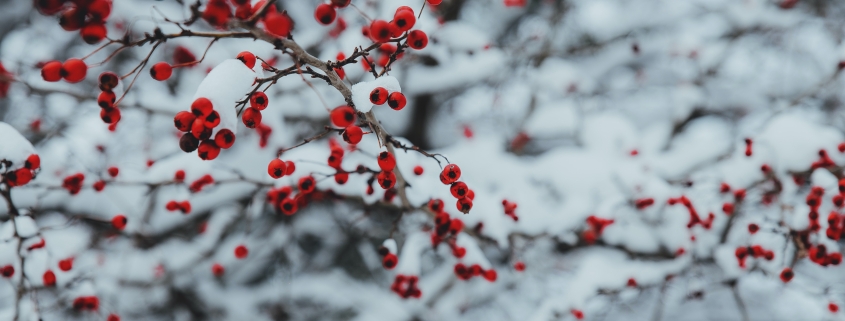Your Landscape Hard at Work in Winter
Many believe their landscaping is asleep in winter, simply waiting for conditions to send plants a signal that spring is at hand. After all, the lawn has stopped growing and all the leaves are gone. The coming of winter does bring about a period of dormancy in your yard, but out of view, much is taking place.
Dormancy is much more than a period of suspended animation. During this time, plants have put in place an important survival mechanism to help them gear up for the warmer weather ahead.
Many plants will not flower in spring without first being chilled by winter. This is true of cherry trees, for example. Some garden vegetables are also in this category but we rarely see the flowers because we harvest the vegetable in fall. Carrots, beets, and cabbage are among these veggies. If we were to leave some carrots unharvested, the plant would bloom in spring, but in order to do so it would use up the nutrients in the carrot, leaving it shriveled and inedible. During winter, the gene that represses flowering goes through an alteration process called vernalization that allows it to bloom in spring.
During winter, most trees move sugars and carbohydrates from leafy areas down to the roots so the roots can get enough nourishment in the winter months to survive and begin new growth in spring. Evergreen leaves continue their photosynthesis during winter but at a much slower pace.
Seeds from either native plants or introduced plants from a cold climate are genetically programmed to survive winter. They are metabolizing at very low levels until spring. As the day’s light grows longer and the temperature rises, the seed’s hormones will trigger germination if it has enough water.
When you look out over your winter yard, just think of all the invisible work taking place to make your beautiful landscape come to life in spring.




